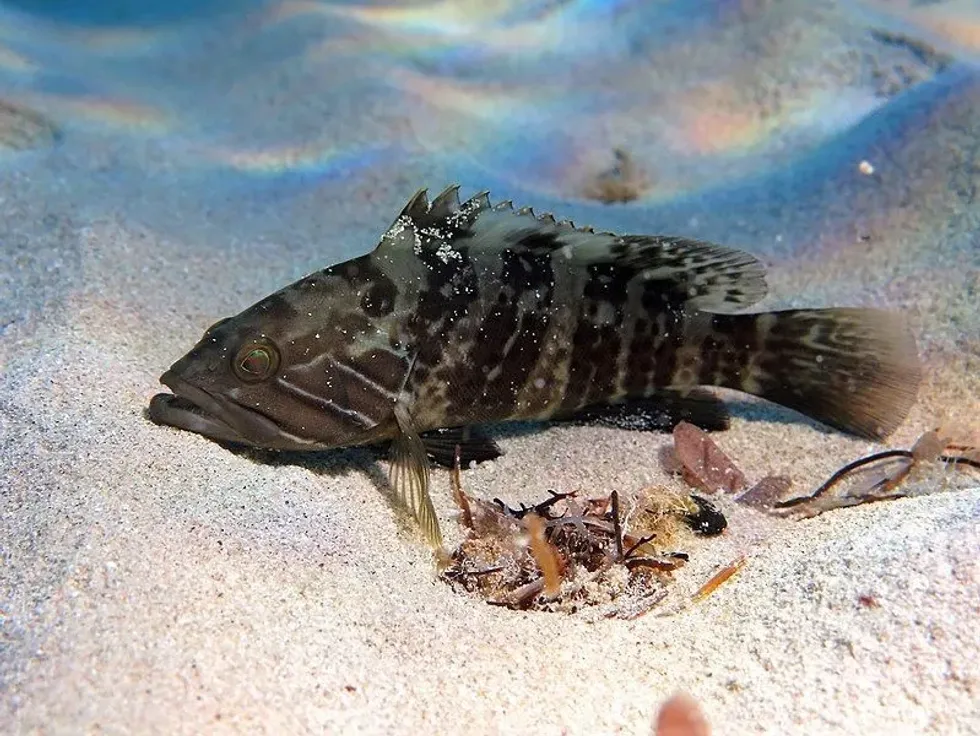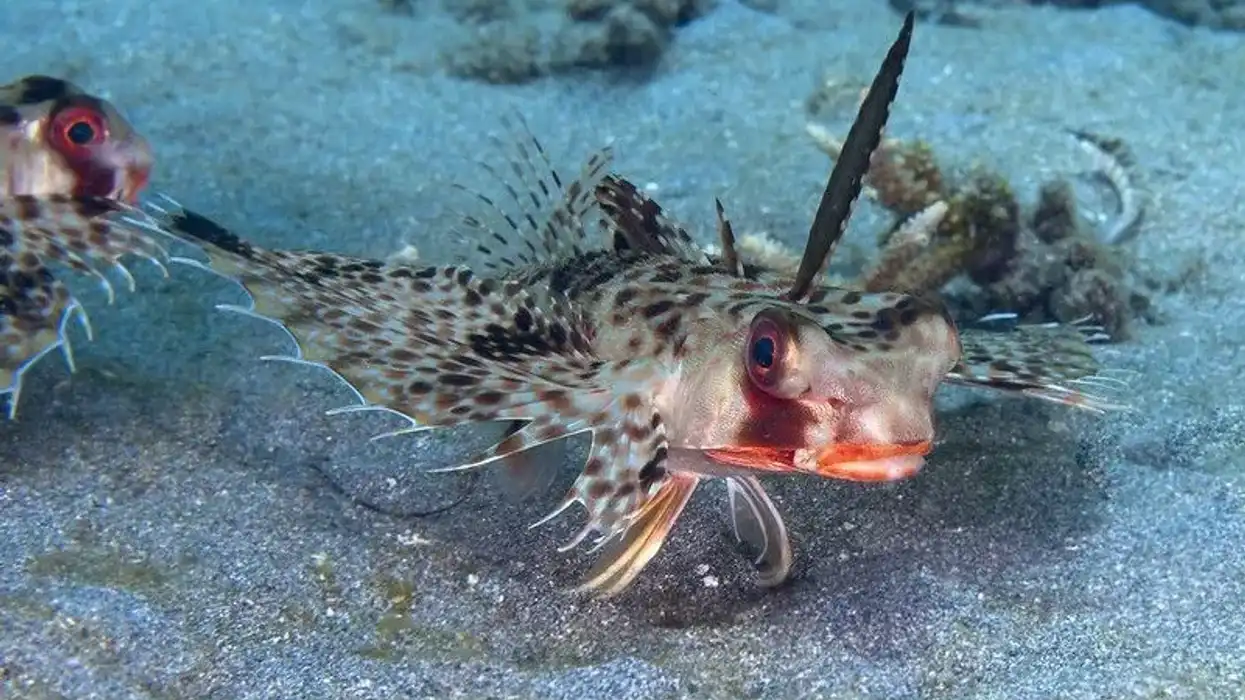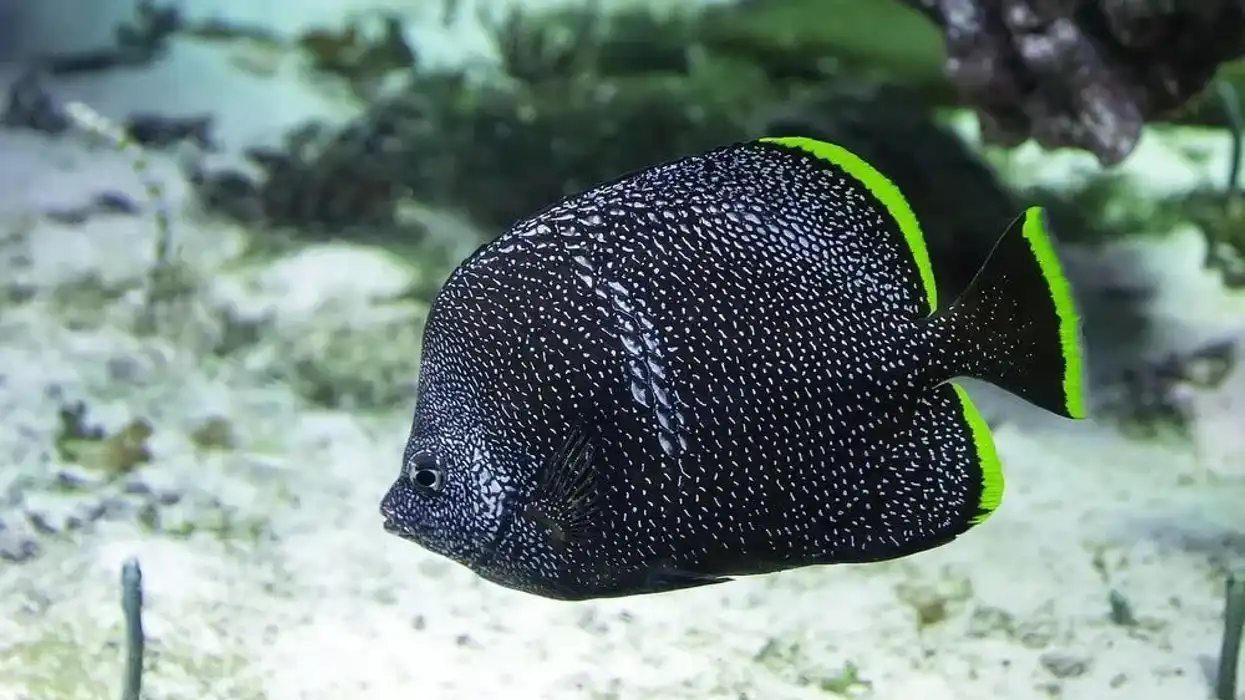The white grouper or Epinephelus aeneus is a species of fish that is native to the areas of the Mediterranean and the south-eastern parts of the Atlantic Ocean. Known for having a large range and distribution, these fishes are called this for a specific reason.
The word 'grouper' is taken from the Portuguese or indigenous South American language word 'groupa'. Even though they have greenish-bronze bodies, the fins of this grouper species consist of whitish margins. A grouper fish is usually different colors.
However, all is not well for this carnivorous species. Overhunting has greatly reduced their numbers in their native habitats.
Even when they have been protected, the demand for the species has led to their killing by poachers during the nighttime with the help of lights and spear guns. They have a Near Threatened status currently, however inconsiderate hunting could cause their classification to change into a more serious one.
For other fish content, take a look at Atlantic goliath grouper and leopard grouper!
White Grouper Interesting Facts
What type of animal is a white grouper?
The white grouper (Epinephelus aeneus) is a species of groupers that are found in marine ranges of the Atlantic Ocean and the Mediterranean Sea. It has been over 200 years since the Epinephelus aeneus was scientifically described by Étienne Geoffroy Saint-Hilaire, a French naturalist, in 1817.
What class of animal does a white grouper belong to?
Being a species of groupers, white groupers belong to the class of Actinopterygii like other types of groupers like the Nassau grouper and the red grouper. The scientific name of white groupers is Epinephelus aeneus, with their genus being Epinephelus. This fish species is part of the family Serranidae.
How many white groupers are there in the world?
Unfortunately, we do not know about the exact population range of this slightly large species of fish. What we do know is that the constant pressure of fishing in countries like Greece, Senegal, Italy, Turkey, Morocco, and other Mediterranean countries within their fairly large range, has resulted in a decline of the marine population of this species.
The declining trend of this fish is a cause of major concern for experts.
Where does a white grouper live?
Epinephelus aeneus or white groupers are fish species that live in rock or muddy substrates in their range distribution. The length of their large range extends from areas of the Mediterranean and to eastern and southern parts of the Atlantic Ocean.
This fish species is found in countries like Egypt, Italy, Spain, Portugal, Gabon, Senegal, the Democratic Republic of Congo, Croatia, Corsica in France, Monaco, Algeria, Albania, Angola, The Gambia, Ghana, and Greece.
While there have been reports of these fishes being spotted in the Canary Islands and in other places, those reports haven't been substantiated. However, it wouldn't be surprising to notice this fish species outside of its native distribution because they have been confirmed to have a history of vagrancy.
This is a phenomenon in which fish or other animals can be found far away from their native range.
What is a white grouper's habitat?
The white grouper's native habitat is in the muddy and rock substrate of large oceans. These moderately large-in-length fish species can be found at depths that range from 65-656 ft (20-200 m).
Yet, this habitat is only applicable while evaluating the life of adults. Juveniles of this species are found near estuaries and coastal lagoons. Like all groupers, white groupers are marine saltwater fishes and are not found in fresh-water areas!
Interestingly, white groupers are known for their seasonal migration near the coast of Mauritania and Senegal. This behavior has been attributed to the upwelling of the ocean and the spawning of these moderately large fishes.
Who does the white grouper live with?
While we do not really know much about the social structure of groupers when they reach maturity, we do know that they are generally a solitary fish species within their range. This is slightly strange as groupers are known to live in groups.
The only time of the year when they are not solitary is when the male and female fish enter the spawning period.
How long does a white grouper live?
Information regarding the total life span of this fish species is not really known. However, we can assume a few things in general.
There are some sources like the International Union For Conservation Of Nature (The IUCN) that states that we can assume their life length to be somewhere around 19 years, with the first period of maturity occurring between five to seven years. The generational length of this fish is thought to be around 11 years.
Groupers, in general, have a life longevity varying between 9-37 years.
How do they reproduce?
The reproduction process of this fish is quite interesting. This species is known to be protogynous hermaphrodites, where females first attain maturity and then change into male fishes after a certain amount of time. While you can search and learn more about protogynous hermaphrodites, we'll tell you how this particular reproduction works for this fish.
The body of the female fish first attains maturity at the age of five to seven years. However, the body changes its sex after reaching the age of 10-13 years.
Now, the reproduction of this species results in eggs being released into the water. Even though we do not know the exact number of eggs fertilized, the body of the female fish has somewhere between 789,436 ova to 12,589,242 ova in them, with the number of ova increasing depending on the weight and length of the body.
According to observations in certain countries, the peak breeding season varies between June, July, and August for these groupers!
What is their conservation status?
Due to the large-scale overhunting of white groupers to satisfy the need for commercial fisheries, this species has been currently classified as Near Threatened by the International Union For Conservation Of Nature.
White Grouper Fun Facts
What do white groupers look like?
The description of body features and the coloration of these white groupers can make for a fun read. For example, even though this fish has a greenish-bronze coloration all over its body, it is still called a white grouper due to whitish margins on its purplish-brown fins.
Interestingly, the standard length of the head is almost three or three and a half times as large as the length of the rest of the body.
The fish has 10-11 spines in its dorsal fin, while the anal fin has seven to nine soft rays and three spines. Juveniles are slightly different in appearance, with five dark vertical bands across their pale bodies.
How cute are they?
If you are in search of a cute fish, white groupers aren't the ones that are most suitable for this moniker. Instead, you should look for something like the peacock grouper.
How do they communicate?
Again, not much information is known regarding how these fishes communicate with each other. However, they have otoliths which are structures in the inner ear helping to detect auditory signals in vertebrates.
How big is a white grouper?
Epinephelus aeneus is a medium to large fish, which has an average length of 19-24 in (50-60 cm). However, they have been known to reach a size of around 47 in (120 cm). In comparison, the Atlantic goliath grouper is almost four times as large as they are.
How fast can a white grouper swim?
There is no information available regarding how fast white groupers can swim in the ocean.
How much does a weigh?
For their weight, white groupers do not exceed more than 55 lb (25 kg).
What are the male and female names of the species?
For this species of fish, there are no distinct names for the males and females.
What would you call a baby white grouper?
Baby white groupers can be simply referred to as fry or juveniles, with the latter term being used when the fish is slightly older.
What do they eat?
Being carnivores, the diet of this species includes a wide range of food found in the ocean. They usually include cephalopods and mantis shrimps in their diet. Smaller fish and crabs are also part of their feeding menu.
Are they poisonous?
No, this species is not poisonous at all.
Would they make a good pet?
Since white groupers are marine animals, we would recommend against keeping them as pets. Plus, they are carnivores and would probably feed on other creatures in the enclosure or tank.
Did you know...
The highest weight ever recorded for white groupers was around 76 lb (34 kg) when a fish was caught off the coast of Sicily in Italy.
Is the white grouper reef safe?
As this fish species can hide in coral reefs to protect themselves and prey on marine animals that are part of their diet, they are reef safe. Groupers, in general, are often found in coral reefs with many species that only dwell within coral reefs.
Now, while they are reef safe, they might eat smaller fish when put in an enclosed tank as they are carnivores by nature.
Can we eat it?
Yes, we can eat white groupers. They are often served in many restaurants as part of their seafood menu.
Here at Kidadl, we have carefully created lots of interesting family-friendly animal facts for everyone to discover! For more relatable content, check out these greasy grouper facts and grouper facts!
You can even occupy yourself at home by coloring in one of our free printable catfish coloring pages.
Main image by Roberto Pillon
Second image by Roberto Pillon










